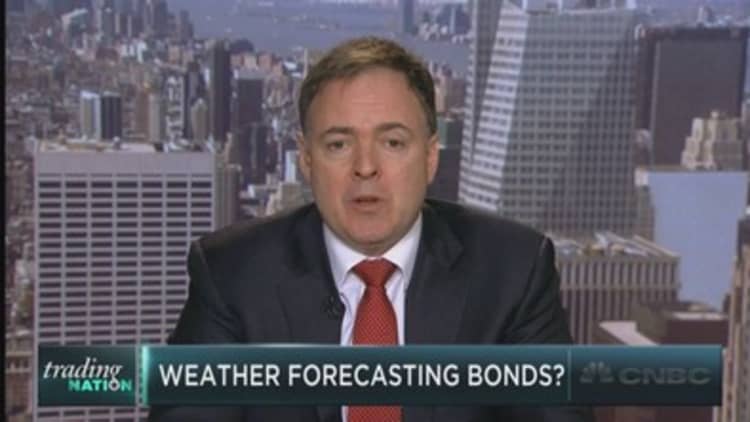
Could global weather patterns be forecasting the next move for bond yields?
According to Tom McClellan, a technical analyst who edits the McClellan Market Report, temperatures and interest rates have been moving closely together over the past 35 years.
His chart, which lags yields by five years to make the match, indeed appears to show some type of correlation. McClellan plots Moody's AAA rated corporate bond yields against an inverted global temperature data set provided by a climate research unit at the University of East Anglia. And over time, temperatures have clearly moved higher as yields have moved lower.
While the relationship may sound far-fetched, McClellan provides an illuminating explanation.
"Warmer temperatures generally mean greater crop yields, which means lower food prices, and eventually lower inflation, so interest rates come down. Similarly, crop failures and famines tend to arise more from cooling period for global average temperatures," McClellan wrote in a Thursday note.
"Whether or not that explanation satisfies everyone, the correlation between interest rates and the offset temperature data is hard to ignore," he adds, if a bit defensively.
McClellan uses the data to suggest that yields could see a short-term bottom, as temperatures temporarily bottomed around five years ago. But by 2017, they will head lower again.
No surprise, that, given that 2014 was the Earth's warmest year on record, according to NASA.
Read More For bond traders, old strategies 'just won't work'
But some market professionals are skeptical.
"It's a classic, just, two massive trends happening at the same time," said Larry McDonald, head of U.S. strategy at Societe Generale. He said bond yields have been in a nearly straight path lower due to aging in developed countries. As more and more people get older, they turn to purchases of bonds, leading to higher bond prices and lower yields.
Meanwhile, temperatures are rising due to human activities that emit greenhouse gasses like carbon dioxide.
"I feel that this is very much one of those 'correlation does not equal causation' scenarios," agreed Erin Gibbs, equity chief investment officer with S&P Capital IQ. "For me, just looking at it from a quantitative finance perspective and really delving into his theory, it really felt like over-fitting. He has to move the temperature chart five years ahead and then it works for the last 30 years but it doesn't work for the prior 35 years. All those little tweaks and adjustments are what we call 'over-fitting,' where you have to tweak your signal in order to make it work."
Additionally, the shift five years forward is more or less an automatic disqualifier for Gibbs.
"Wall Street never takes five years to react to any information. It's usually a day," she said. "So I don't see this really as a signal."






